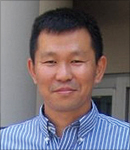This story was originally published as part of the U.S. Department of Energy's SunShot Initiative series of success stories in December 2016
Advanced inverters are a critical enabler of high solar photovoltaic (PV) penetrations because of their smart functionalities and ability to maintain a balanced grid. Deploying advanced inverters with smart grid capabilities in the field, however, is easier said than done. Thanks to the work of the Electric Power Research Institute (EPRI), the solar industry has a solid foundation for both using and improving inverter technology.
As a key component of modern solar systems, inverters convert direct current (DC) produced by solar panels into alternating current (AC), which is then usable by households and businesses. Advanced inverters are an important tool for utilities because they collect data on PV systems and can provide reactive power support to regulate voltage and frequency, enabling grid operators to pinpoint solar production levels and better control how much solar is on the grid.
EPRI’s SunShot Initiative project served as an early model to the solar industry, demonstrating not only how to create a smart inverter, but how to test and deploy the technology in the field. EPRI began work on the project in 2011, partnering with solar companies, utilities DTE Energy, National Grid, and Pepco, and the National Renewable Energy Laboratory to create an advanced inverter that is consistent with utility communication system protocols. By establishing an end-to-end open standard protocol based communication with distribution management, EPRI’s standards were able to bridge the gap between simulation and deployment.
The EPRI project team conducted rigorous testing at the National Renewable Energy Laboratory’s Energy Systems Integration Facility and also at EPRI’s Knoxville, Tennessee laboratory to ensure the new inverters would respond to expected commands at the utility scale. This phase gave the team greater confidence that the technology they developed was sound and ready to be tested in the field.
Next, advanced functionalities were implemented and tested on three distribution feeders for different circuit level benefits such as voltage variation reductions, power factor improvements, and loss reduction. The team was able to successfully test the inverters in the field and determine that there is significant value in both autonomous and communication controlled operation of the advanced grid support functions.
The successful lab and field demonstrations enabled the researchers to contribute research that led to amendments—IEEE 1547a-2014 and IEEE 1547.1a-2015—to the Institute of Electrical and Electronics Engineers (IEEE) interconnection standards on distributed energy resources. These amendments create inverter testing protocols and procedures, which give inverter manufacturers industry-accepted standards to guarantee their products and enable broader utility use.
EPRI’s field testing also yielded lasting relationships with utilities. In concert with their research project, EPRI collaborated with additional utilities on both the design and demonstration phases, helping to broaden industry participation. These collaborations enabled EPRI to ensure a variety of inverter manufacturers and PV plant/feeder situations, providing greater learning opportunities and strengthening their research.
In addition, one of the utilities EPRI collaborated with, National Grid, hosted two PV demonstration sites in Massachusetts as a part of its program to own and operate solar. As a result of the successful demonstration, National Grid expanded its program and now expects to own and operate up to 20 megawatts of PV plants and conduct further advanced inverter research with the help of EPRI.
Furthermore, EPRI leadership awarded the collaborative team with the prestigious Technology Transfer Award for their collective contributions to the IEEE national standards and requirements for communicating with smart inverters.
Prior to EPRI’s project, the value of smart inverters was only seen on paper through modeling and simulation exercises. Without a demonstration, there was no way to see how inverters would interact with other technologies and respond to real-world grid fluctuations. EPRI’s research and industry leadership established the use of advanced inverters as we know them today, helping utilities better incorporate solar into their operations and planning while also minimizing grid integration costs.
Learn more about the SunShot Initiative’s Systems Integration program and EPRI’s training, grid integration, and PV reliability projects with SunShot.
About the Authors
 Dr. Guohui Yuan is the program manager for the systems integration subprogram at the U.S. Department of Energy SunShot Initiative. His team supports research, development, and demonstration of technologies and solutions that enable the widespread deployment of solar energy on the nation’s electricity grid. Dr. Yuan has been supporting the SunShot Initiative as a technical advisor since 2011. Previously, he held several key positions at industry-leading clean technology startups, including CURRENT Group, GridPoint, and WaveCrest Labs. He is a recognized thought leader, has many technical publications, and holds nine patents.
Dr. Guohui Yuan is the program manager for the systems integration subprogram at the U.S. Department of Energy SunShot Initiative. His team supports research, development, and demonstration of technologies and solutions that enable the widespread deployment of solar energy on the nation’s electricity grid. Dr. Yuan has been supporting the SunShot Initiative as a technical advisor since 2011. Previously, he held several key positions at industry-leading clean technology startups, including CURRENT Group, GridPoint, and WaveCrest Labs. He is a recognized thought leader, has many technical publications, and holds nine patents.
 Dr. Aminul Huque is principal technical leader in the Integration of Distributed Energy Resources group at the Electric Power Research Institute (EPRI). His research at EPRI focuses on smart inverters, interconnection standards and grid codes, solar photovoltaics, energy storage, load integration, and microgrids. Dr. Huque is leading the IEEE P1547 voltage regulation subgroup and is an active member of the IEEE 1547 working group. Huque earned a Master’s degree from Imperial College London in 2003, and a Ph.D. from the University of Tennessee at Knoxville in 2010.
Dr. Aminul Huque is principal technical leader in the Integration of Distributed Energy Resources group at the Electric Power Research Institute (EPRI). His research at EPRI focuses on smart inverters, interconnection standards and grid codes, solar photovoltaics, energy storage, load integration, and microgrids. Dr. Huque is leading the IEEE P1547 voltage regulation subgroup and is an active member of the IEEE 1547 working group. Huque earned a Master’s degree from Imperial College London in 2003, and a Ph.D. from the University of Tennessee at Knoxville in 2010.








